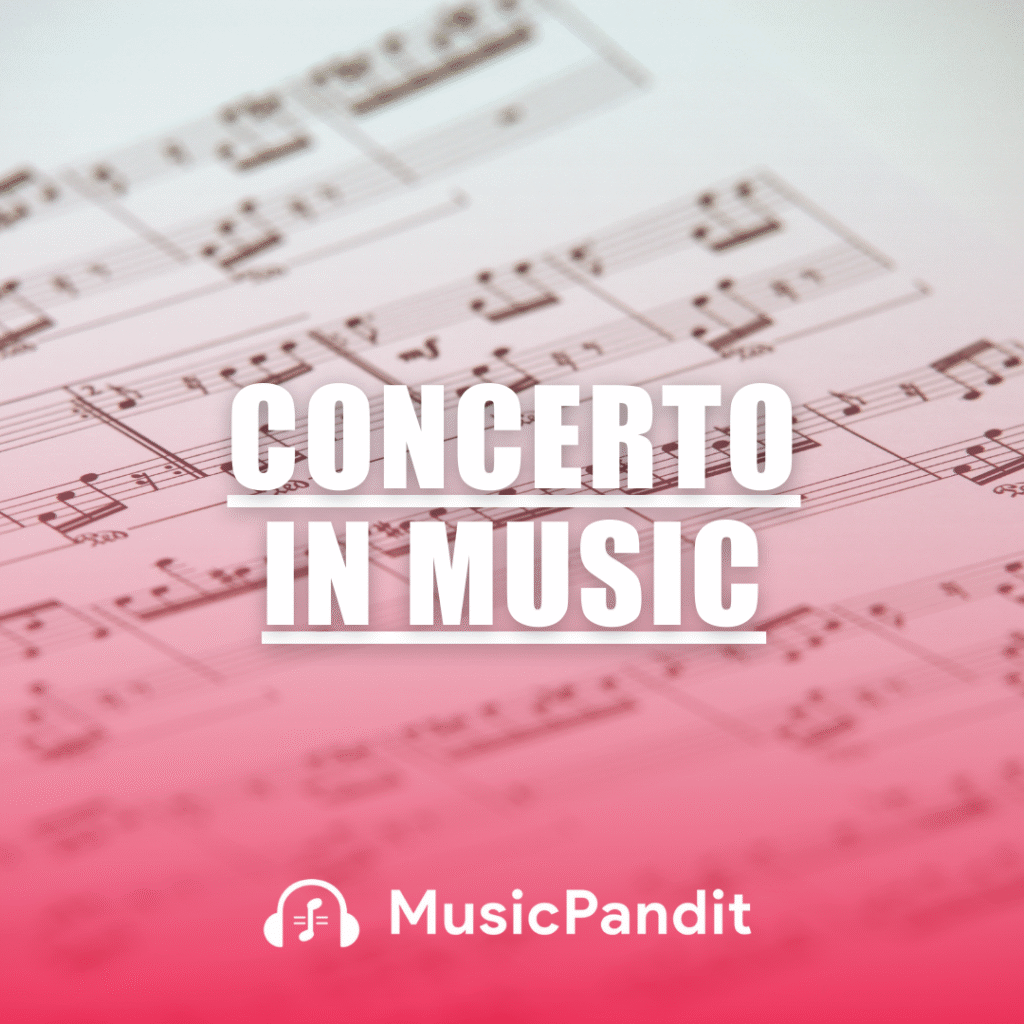In the world of classical music, few forms capture the drama, complexity, and virtuosity of performance like the concerto. Whether it’s the soaring violin of Vivaldi or the thundering piano of Rachmaninoff, concertos have long been a powerful way for composers to showcase both individual talent and orchestral richness.
This article will walk you through what a concerto is, its historical roots, structure, famous examples, and why it remains one of the most celebrated musical forms in Western classical tradition.
What Is a Concerto in Music?
A concerto is a musical composition typically composed in three movements, where one solo instrument (such as a piano, violin, or flute) is accompanied by an orchestra. The hallmark of a concerto lies in its contrast—between the soloist and the ensemble, between melodic lines and harmonic support, and between technical brilliance and expressive depth.
The term “concerto” comes from the Italian word concertare, which means “to bring together” or “to agree.” In essence, it’s a dialogue—or even a friendly battle—between soloist and orchestra.
The Origins and Evolution of the Concerto
Baroque Period (1600–1750)
The concerto first came into prominence during the Baroque era, with composers like Arcangelo Corelli and Antonio Vivaldi leading the charge. Vivaldi’s The Four Seasons is among the most famous examples of early concertos.
During this period, two main types emerged:
- Concerto Grosso: A small group of soloists (called the concertino) contrasts with the full ensemble (ripieno).
- Solo Concerto: A single instrument is pitted against the orchestra. This is the form that would later dominate.
Classical Period (1750–1820)
With composers like Mozart and Beethoven, the concerto matured. Mozart composed 27 piano concertos, each with increasing complexity and emotional depth. The Classical concerto adopted a more balanced and refined structure, often in three movements: fast – slow – fast.
Romantic Period (1820–1900)
The Romantic era elevated the concerto into a dramatic and emotionally charged showcase. Virtuoso performers like Paganini and Liszt inspired composers to write pieces that tested the limits of human capability. Concertos by Chopin, Tchaikovsky, and Rachmaninoff became iconic.
20th and 21st Century
Modern composers like Shostakovich, Bartók, and John Adams have continued the concerto tradition with innovative harmonic language, diverse instrumentation, and experimental forms. Today, concertos are written for traditional solo instruments as well as modern ones like the saxophone, electric guitar, and even percussion.
The Structure of a Traditional Concerto
While concertos can vary, most follow a traditional three-movement form:
1. First Movement – Fast and Dramatic (Allegro)
- Often in sonata-allegro form.
- Begins with an orchestral introduction, followed by the soloist’s entry.
- Includes a cadenza, a virtuosic solo passage where the soloist plays without orchestral accompaniment.
2. Second Movement – Slow and Expressive (Adagio or Andante)
- Offers lyrical and emotional contrast.
- Allows the soloist to showcase expressiveness and tone.
3. Third Movement – Lively and Upbeat (Presto or Allegro)
- Often a rondo or sonata-rondo form.
- Brings the concerto to a dynamic and energetic close.
Famous Concertos Through History
Here are some timeless concertos that continue to captivate listeners and performers alike:
Violin Concertos
- Beethoven – Violin Concerto in D major, Op. 61
- Tchaikovsky – Violin Concerto in D major, Op. 35
- Mendelssohn – Violin Concerto in E minor, Op. 64
Piano Concertos
- Mozart – Piano Concerto No. 21 in C major, K. 467
- Rachmaninoff – Piano Concerto No. 2 in C minor, Op. 18
- Chopin – Piano Concerto No. 1 in E minor, Op. 11
Other Instruments
- Haydn – Trumpet Concerto in E-flat major
- Carl Nielsen – Flute Concerto
- Jennifer Higdon – Percussion Concerto
What Makes a Concerto Unique?
1. Virtuosity
A concerto is a platform for soloists to demonstrate technical prowess and artistry.
2. Conversation
Unlike symphonies where the orchestra plays as one unit, the concerto allows for dialogue—question and answer—between the soloist and the ensemble.
3. Drama and Contrast
The shifting balance of power between soloist and orchestra creates tension and excitement.
Modern Concertos and Innovations
In the 21st century, concertos are being reimagined in fascinating ways. Some modern examples include:
- Concertos for electric guitar or jazz saxophone
- Use of electronics and looping
- Collaborative pieces where improvisation plays a key role
Composers are blending genres, cultures, and technologies to expand the concerto into uncharted territories.
How Concertos Influence Music Education and Performance
Concertos are an integral part of advanced music education, especially for students preparing for competitions, recitals, or conservatory auditions. They demand a high level of:
- Technique
- Interpretation
- Stage presence
- Ensemble collaboration
Learning a concerto also teaches musicians how to lead and listen simultaneously—skills essential for any performing artist.
Fun Facts About Concertos
- The cadenza was originally improvised by the soloist, though today it’s usually written out.
- Bach’s Brandenburg Concertos are a blend of the concerto grosso and solo concerto styles.
- Beethoven was nearly deaf when he composed his final piano concertos—yet they remain masterpieces.
Conclusion: Why Concertos Continue to Captivate
The concerto remains one of the most exciting and expressive forms of classical music. It’s more than just a piece of music—it’s a conversation, a showcase, and a storytelling journey between the individual and the collective.
Whether you’re a listener, performer, or student of music, understanding concertos opens the door to a world where technique meets expression, and solo brilliance dances with orchestral grandeur.
Discover more musical terms and concepts at Music Pandit’s Articles and continue your journey into the fascinating world of music.
Source:https://www.musicpandit.com/resources/articles/concerto/

